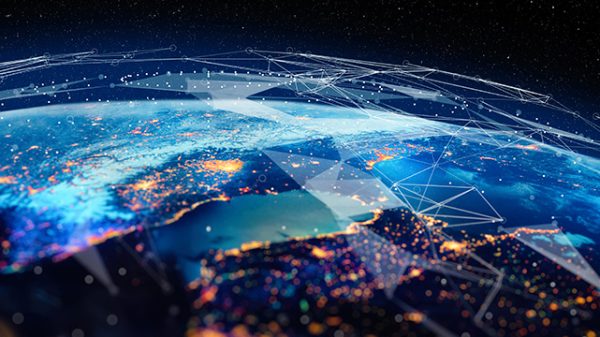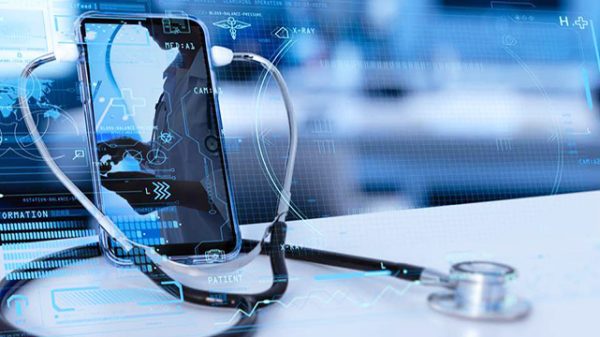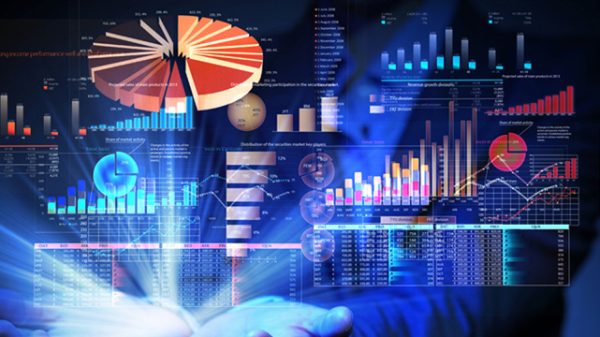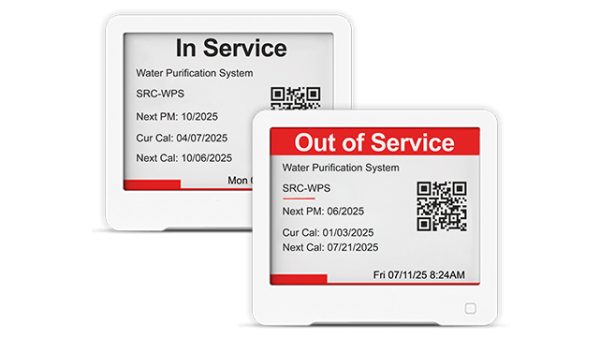The smart water metering market size is projected to reach US$ 7.36 billion by 2031 from US$ 3.80 billion in 2023 to register a CAGR of 9.9% during 2023–2031.
According to a new comprehensive report from The Insight Partners, the global smart water metering market is observing significant growth as OEMs and other research centers are constantly pursuing smart and connected technologies for efficient monitoring and operations without any human interference.
Thus, technologically advanced sensor systems are being developed, which is expected to attract a significant number of industries in the coming years.
Global Smart Water Metering Market experiences growth due to increasing number of smart water meter projects across different regions.
The report runs an in-depth analysis of market trends, key players, and future opportunities. Due to the moderate entry barrier to the industry, tier 2 companies are entering the market. Also, well-established companies operating in the market are coming up with new offerings. Major manufacturers of smart water meters are based in North America and Europe. New opportunities are emerging at a high rate in Europe and Asia Pacific, especially in countries such as Germany, Italy, Spain, the UK, China, Japan, and India.
Overview of Report Findings:
Market Growth: The global smart water metering market size was valued at US$ 3.80 billion in 2023 and is projected to reach US$ 7.36 billion by 2030; it is expected to register a CAGR of 9.9% during 2023-2031. Increasing Number of Smart Water Meter Projects across Different Regions: Several initiatives related to water savings and a clean environment have been witnessed globally during 2011–2020. Different government initiatives and nonprofit organizations (NPOs) across the world have been raising awareness for water savings and usage monitoring. This is also leading to the launch of new upgrades to water distribution infrastructure projects by governments of different countries to improve the distribution infrastructure and boost the operational efficiency of the water resources along with better cost savings. The deployment of smart water meters across such old infrastructure is leading to new developments across different regions, which, in turn, is catalyzing the demand for smart water meters. Nonrevenue Water Monitoring and Control: Nonrevenue water is the discrepancy between the amount of water produced and the amount of water billed to customers. Water loss from source to destination occurs for various reasons, including leaks (physical loss), metering mistakes, manipulation, and theft (apparent losses). The NRW is increasing at an exponential rate, resulting in water scarcity and other concerns. Many smart water meters include alarms to reduce the likelihood of pipeline theft or manipulation. These warning systems help generate income from the end user’s location. The increasing demand for monitoring, controlling, and reducing nonrevenue water is driving companies in the industry to innovate and design robust technologies, which is driving the smart water metering market growth. Smart Irrigation Systems Through Smart Water Management: Smart irrigation or smart agriculture is a flourishing sector in North America and Europe due to the fact that the regions have sufficient agricultural land. However, they lack human labor and time for the conventional form of agriculture. Smart agriculture or smart irrigation systems involve the usage of several sensors, data loggers, and communication systems along with data platforms with which the operator can easily review the procedures. The advantages of smart water meters in irrigation or agriculture are sensing the amount of water needed and spraying the required amount. It reduces time, minimizes human labor, and enhances accuracy, thereby resulting in high-quality crop yield. Technological advancements in water conservation are highly beneficial to the agriculture industry in countries such as the US, Canada, Mexico, Germany, France, the UK, Italy, Australia, and others. The high adoption of smart technologies in irrigation is expected to bolster the growth of the smart water metering market in the coming years. Geographical Insights: In 2023, North America led the market with a substantial revenue share, followed by Europe and Asia Pacific. Asia Pacific is expected to register the highest CAGR during the forecast period.Market Segmentation:
On the basis of type, the smart water metering market is segmented into AMI and AMR. The AMR segment held the largest smart water metering market share in 2023. On the basis of components, the smart water metering market is segmented into controlling units, display storage and integrated software, and others. The display storage and integrated software segment held the largest smart water metering market share in 2023. On the basis of end-users, the global smart water metering market is segmented into residential and industrial. The residential segment held the largest smart water metering market share in 2023. On the basis of meter type, the smart water metering market is segmented into ultrasonic meters, electromagnetic meters, and electromechanical meters. The ultrasonic meters segment held the largest share in the smart water metering market in 2023. The Global Smart Water Metering market is segmented into five major regions: North America, Europe, APAC, the Middle East and Africa, and South and Central America.Competitive Strategy and Development:
Key Players: A few major companies operating in the Smart Water Metering market growth include Arad Ltd, Badger Meter Inc., Bmeters SRL, Diehl Stiftung & Co KG, Itron Inc., Kamstrup AS, Mueller Water Products Inc., Neptune Technology Group Inc., Sensus USA Inc, and WAVIoT Integrated Systems LLC. Trending Topics: Smart Meter and Smart Electric Meter.Global Headlines on Smart Water Metering:
“Itron, Inc., which is innovating the way utilities and cities manage energy and water, announced that PUB, Singapore’s national water agency, is leveraging SP Group’s existing Itron industrial IoT network canopy for smart water metering. The smart water metering rollout will connect some 300,000 Itron residential and C&I smart water meters to the existing network to achieve its water conservation goals.” “Badger Meter, Inc. announced that it has acquired select remote water monitoring hardware and software from Trimble (NASDAQ: TRMB), including the Telog brand of RTUs (remote telemetry units) and TrimbleUnity Remote Monitoring software. The acquisition provides real-time monitoring hardware and software targeted at distributed data collection for applications in water, wastewater, stormwater, and environmental water monitoring.” “Danish company Kamstrup, which manufactures system solutions for intelligent energy and water metering, has been awarded a major contract tendered (via an open tender procedure) by Bern-based energy and infrastructure enterprise BKW Energie AG. The contract comprises 404,000 OMNIPOWER electricity meters, complete with a head-end system.” Kamstrup A/S entered a partnership with Hjørring water utility to supply intelligent water meters flow IQ 2200 meters for enabling remote meter reading, enhancing operational efficiency, and tracking water consumption.” “Diehl Metering, a provider of metrology and innovative IoT solutions, unveiled the latest addition to its water meter portfolio: the ultrasonic HYDRUS 2.0 with LoRaWAN connectivity. Offering exceptional accuracy (R800) and resistance to limescale, sand, and air interference, HYDRUS 2.0 features LoRaWAN technology to enhance network operational efficiency through bi-directional communication.” “WAVIoT Integrated Systems LLC participated in the IoT India Expo 2019 to enter the Indian market. The company showcased its products to a large number of potential customers. This aided the company in gaining clients in the Indian market.”Europe held a significant share of the smart water metering market in 2023. The European market is segmented into France, Germany, Italy, Russia, the UK, and the Rest of Europe. Mega cities in the UK, Germany, and France are considered to be the nodes of smart water meter growth that encourage the adoption of this technology in the region. Nonrevenue water in Europe accounts for an average of 26% of total water across the European utilities. Along with increasing measures toward nonrevenue water reduction, there is a growing demand for the efficient use of water resources. Therefore, a significant amount of nonrevenue water demands advanced metering systems to manage revenues across other water usages.
Advanced water metering technology provides user-friendly command control systems, integrated billing technology, secure web-based payments, and online consumer applications, which boost customers toward adopting smart water meter products. The Landis+Gyr launched the latest addition of ultrasonic smart water meters—W270 and W370—based on IoT technologies in November 2021. In accordance with the Landis+Gyr Green Design principles, the new portfolio is 100% recyclable after its extensive lifetime of over 15 years. The latest software and hardware solutions for electricity, gas, heat, and water metering were also presented.
Several initiatives related to water savings and a clean environment have been witnessed globally during 2011–2020. Different government initiatives and nonprofit organizations (NPOs) across the world have been raising awareness for water savings and usage monitoring. This is also leading to the launch of new upgrades to water distribution infrastructure projects by governments of different countries to improve the distribution infrastructure and boost the operational efficiency of the water resources along with better cost savings. The deployment of smart water meters across such old infrastructure is leading to new developments across different regions, which, in turn, is catalyzing the demand for smart water meters.
Several local governments have been investing heavily in the modernization of water distribution infrastructure to improve the water savings and operational costs for distributing the water across their respective city’s infrastructure. The Environment Act 2021 aims to reduce the consumption of public water supply in England per head of population by 20% by 2037–2038 compared to the 2019–2020 baseline. In response to this, England is deploying smart water meters. For instance, in June 2023, separately, the UK government and the water regulator Ofwat advocated for expediting the smart meter installation and the use of open data. The Environment Agency, an executive non-departmental public body of the UK government, issued the call-in response to the draft water resources management plans of water companies, citing a “crucial” need for demand reductions, particularly in the short term as well as in the long term toward 2050.
Conclusion:
The water supply system is one of the most crucial systems. With the increasing population, it is inevitably anticipated that the demand for water consumption will increase exponentially. A city’s water distribution channel and management systems are required to be viable over a longer period to maintain consistent growth. They should be integrated with technologies that can monitor and check water loss issues. Various developed and developing nations across the world are witnessing a paradigm shift to smart cities. The governments of various countries are adopting the momentum of smart cities, thereby investing in the development of internet infrastructure in the countries with an aim to bring robust urbanization.
The demand for smart water meters is anticipated to witness exponential growth in these smart cities as the smart city initiatives majorly focus on the energy sector. The water utilities in all countries cater to energy sectors as the energy generation sector is one of the prominent consumers of water. Thus, the rising number of smart city projects is expected to create new trends in the smart water metering market during the forecast period.
The post Smart Water Metering Market Size Worth $7.36 Billion, Globally, by 2031 appeared first on IoT Business News.
























